To many, even basic car maintenance can seem daunting. If you’ve ever taken a look under the hood of your car, it may seem like a complicated mess of hoses, wires, blocks and belts. While some vehicle maintenance should generally be left to the professionals, there are a few things that you can easily take care of yourself.
Checking Fluids Under The Hood
Fluids play an important role in your engine and car health. So, pop the hood and follow along for ways to ensure you are doing your part to keep your vehicle running smoothly.
- Park your car in a well-lit, flat area and let it cool off for at least 20 minutes. Then, prop your hood up and you’re ready to go.
- You should check your fluid levels every 1-2 months.
Keep These in Your Vehicle at All Times:
- Owner’s manual
- Spare rag or towel
- Funnel
- Gloves (optional, but a good way to protect your hands)
- Wipes for cleaning your hands
How to Check Your Oil
- Identify the dipstick. It should be a thin rod with a circular ring at the top or there might be a small handle. Don’t mistake it for your transmission fluid dipstick. Check your owner’s manual or vehicle guide to be sure.

- Pull the dipstick all the way out, wipe the end of it on a rag or a towel to clean it and reinsert the stick. This will help you get a clean reading of the fluid level.
- After a few moments, pull the dipstick out again and look to see if the oil level is near the FULL line.
- If it isn’t, you may need to add more oil (your owner’s manual should tell you what kind of oil to use).
- Never overfill your oil reservoir.
- To add oil, you need to locate the oil reservoir (Note: You cannot add oil through the tube containing the dip stick. Use your owner’s manual to identify the proper location). Remove the cap, use a funnel to add oil, wipe up any oil that may have spilled, return the cap securely and recheck the levels after giving it time to settle.
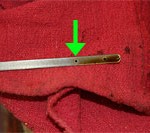
- If you find you’re adding oil regularly, you probably have a leak and should have it checked by a professional.
- If the oil is black or dark brown, instead of a shiny, clear light brown, then you probably need to have the oil changed.
How to Check Your Windshield Wiper Fluid
- Identify the windshield wiper fluid reservoir. Typically it’s a large, white plastic container with an image of a windshield on the lid.
- If you aren’t sure it’s the correct reservoir, consult your owner’s manual or vehicle guide.
- If the fluid level is lower than the fill line or less than three-quarters full, remove the cap and add windshield wiper fluid using a funnel. Do not add water.
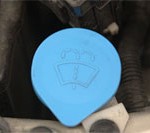
- Wiper fluid is a mixture of soap and anti-freeze to ensure the fluid does not freeze in cold weather. You can purchase the fluid for a few dollars at most gas stations, and any auto parts store.
- Be sure to secure the lid when you’re finished.
Check Engine Light
“Service engine.” “Check engine.” “Service engine soon.” Regardless of what that little control panel indicator may say, it can strike fear into the hearts and minds of drivers. While we can’t advise you on how to solve the problem, we would like to offer a little insight into this mysterious and worrisome indicator.
Why is my check engine light on?
It depends on a few factors since every car is slightly different. You should plan on taking your car to a mechanic or the dealer to have it looked at—sooner rather than later—since many of the issues reported by the check engine light can be seriously damaging to your engine. However, some vehicles do have slight variations in the indicator to express whether it’s a dire emergency or something to get checked within a few weeks.
Your owner’s manual may shed some light on how the indicator is displayed for your vehicle, but here are a few common scenarios:
- If the check engine light appears as a solid light, this can (on some makes and models) indicate a less serious issue.
- If the indicator lights up and blinks, this usually means it’s something more serious that requires immediate attention. It’s like a “Hey! Over here! Pay attention to me!” distress call.
- Some manufacturers distinguish severity by the color of the indicator. Yellow can mean important but not serious while red indicates a more pressing issue that requires attention.
Regardless of whether it’s blinking, solid, yellow or red, you still need to have a professional look at the vehicle.
A few other things to consider:
- Look for obvious indicators in addition to the check engine light that may provide more information. Is the car overheating? Is the oil pressure low? Is the engine behaving strangely? In all of these situations, pull over as soon as it’s safe and turn the engine off.
- Check to make sure your gas cap isn’t loose. This can trigger the sensor and cause the indicator to engage. While the light may not reset immediately, it is quick and easy check.
- If you are towing a trailer or a heavy load and the light comes on, you may be overloading the engine.
I’ve heard about a “code” that the sensor stores. What’s this for?
The check engine light is part of a system that constantly monitors diagnostics relating to emissions, engine efficiency and fuel efficiency, among other things. The computer that controls all of these components will turn the indicator on when a problem is identified. It simultaneously stores a code that provides some information about the problem.
Most auto parts stores can read this code and provide some information about the source of the indicator. You can purchase a scanning tool and extract the code yourself, but unless you are a professional, the code is often meaningless. It simply provides a general guideline of where to look for the problem instead of detailing the faulty component.
If your vehicle has OnStar, an OnStar representative can often read the code remotely and provide instructions on what your next steps should be.
So remember, if the indicator comes on, drive gently to prevent strain on your engine, take stock of the major red flags like an overheating engine or low oil pressure and have your vehicle looked at by a trusted professional as soon as possible.
Get peace of mind on the road by downloading GEICO Mobile today, where things like roadside assistance, digital ID cards, and more are right at your fingertips.
Next article: Top 4 Causes of Summer Car Breakdowns

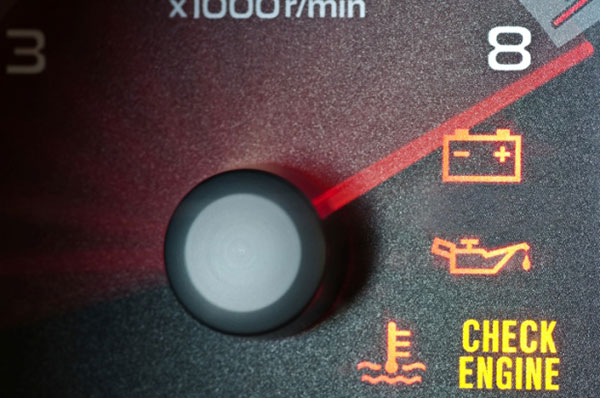


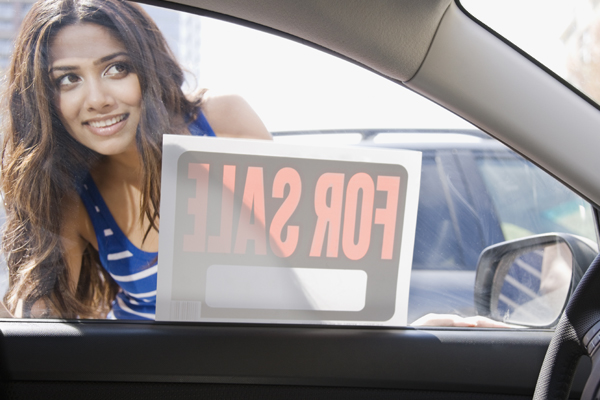
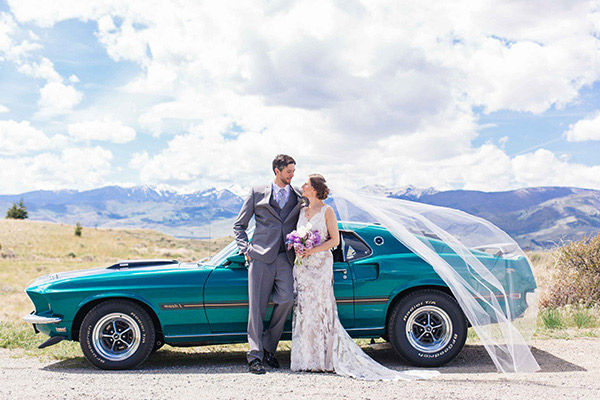


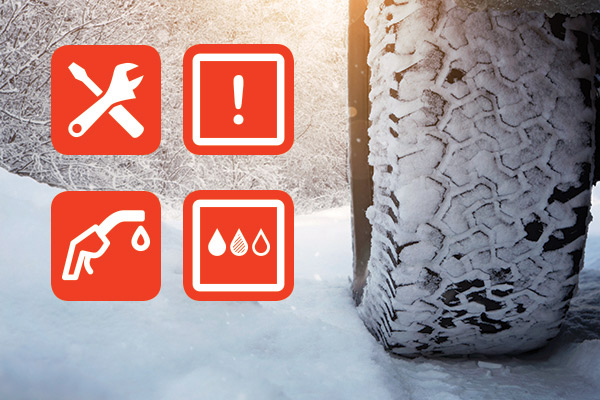

Eddie Figueroa says,
Thanks for the information much appreciate it.
Joe Wolchak says,
How to check engine coolant/anti-freeze
Fay Calhoun says,
Well, on these new cars, if you keep your maintenances schedule or just get regular oil changes at dealer, they will top up any fluids as needed, saving you the trouble.
I never go under my hood unless windshield washer fluid is low. That is the only fluid I maintain. And coolant for AC is not necessary. Also flushing radiator is obsolete I think.
Keep the vehicle gassed and oiled, plus the windshield washer topped and you,’re good to go. But that’s under the hood. You’ll need to keep an eye on the tires for wear and proper inflation. Clean the headlights of any debris for night driving and don’t forget your yellow tinted lenses that minimize the glare.
Jude Dervil says,
Hi Geico , thank you so much for your help protection my car good checking ennytime
For everything l like that your information, me, l do
Very ,very important , everybody’s
God bless everything for your stuff Geico.
Regena vieira Kafara says,
I love GEICO ,thank you.
Anne chan says,
There are the best advice for maintaining my vehicle conditions! Be prepare a new. Wipes is good advice as well.
Barbara Upshaw says,
You offer the most informative information that is especially helpful for seniors! Thanks Geico
Lucresse C says,
This information is very educational and extremely important to know about my car.
Thank you very much!
Lucresse says,
This information is very educational and extremely important to know about my car.
Thank you very much!
Lyudmila Cheban says,
Thanks soooo much !!!!
Ross Nicholson says,
I drive an electric car.
jose varela says,
you completely forgot jumper cables
Terri Richards says,
Should oil be checked when the engine is cold or hot?
Mary says,
Now and then I hear a rapid clicking sound when I turn either right or left.
Is this because the cv joints are lose or cracked?
I drive a 2005 Chevy cavalier.
150,000 miles driven.
Thank you
Janice Taylor says,
Very informative and I love reading your tips, thank you Geico you’re awesome!